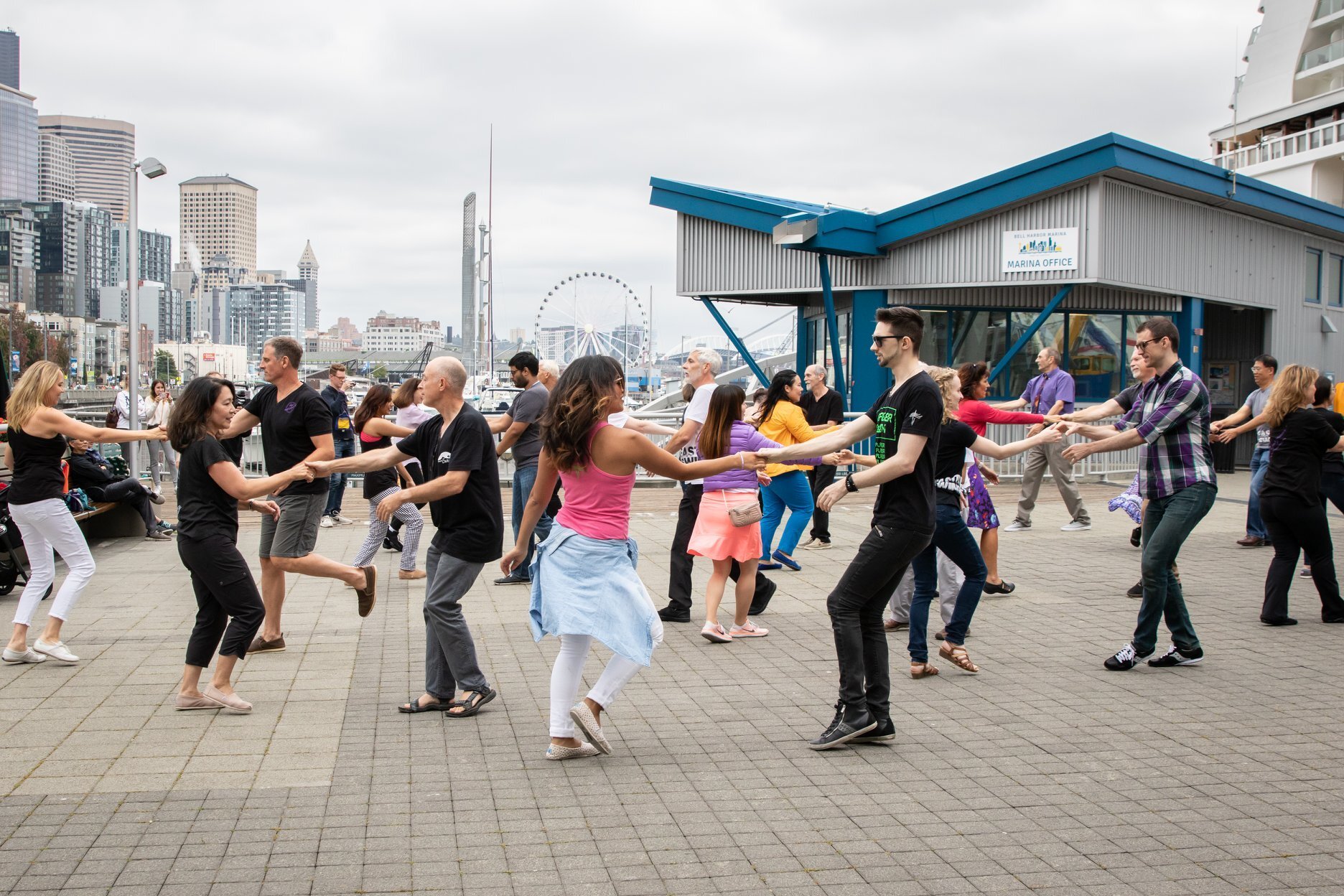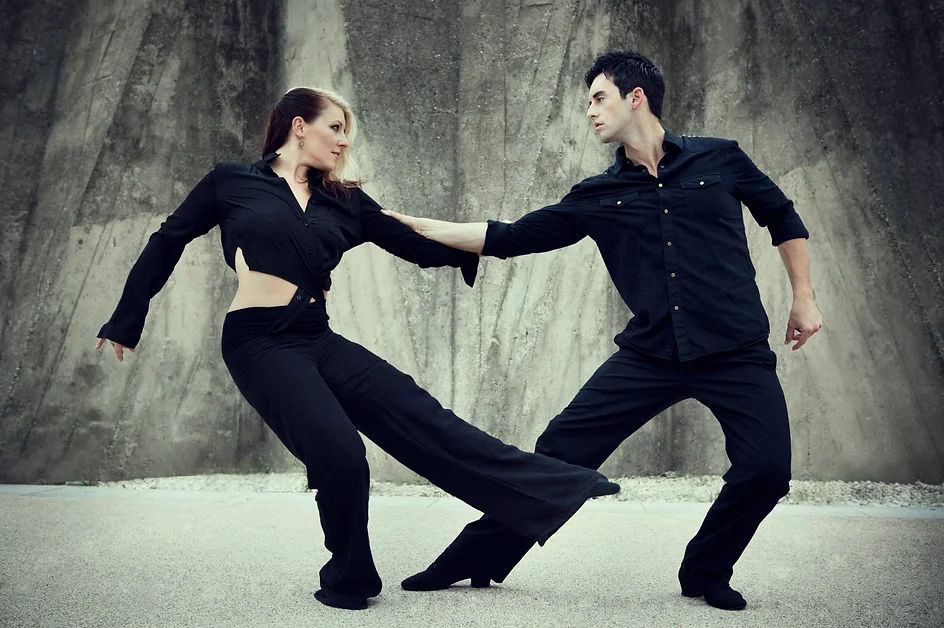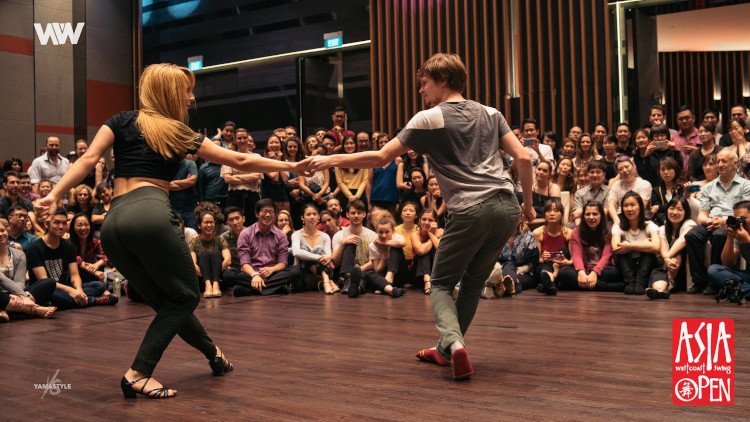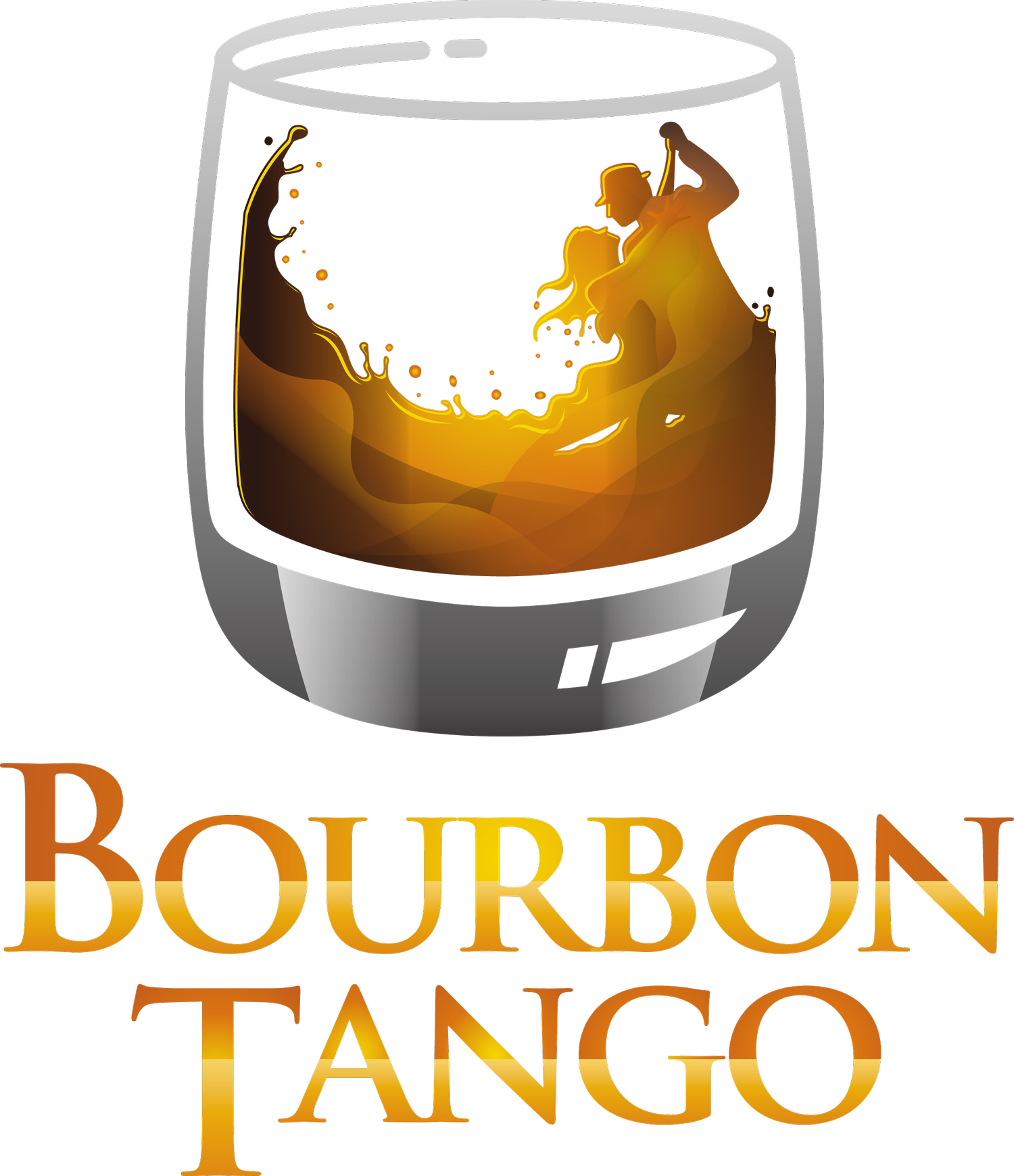West Coast Swing
the dance that captivates with its smooth coolness and contemporary charm. It’s a dance that has carved its own path, branching out from its Lindy Hop roots to become a mesmerizing style that draws dancers from all walks of life.




Come Taste Our West Coast Swing Classes Wednesdays at 7:45
Sign Up to try your first West Coast Swing group class for FREE !
West Coast Swing exudes an irresistible allure that sets it apart from other dance forms. With its fluid movements and sophisticated partnering techniques, the dance glides gracefully to the beats of modern music. It’s the perfect fusion of tradition and innovation, blending the timeless essence of swing with the magnetic energy of contemporary rhythms.
West Coast Swing originated in the 1940s and 1950s as a derivative of Lindy Hop. As swing music evolved, so did the dance, adapting to the smoother and more rhythmic sounds of the time. The dance found a home on the West Coast of the United States, particularly in California, where it thrived and gained popularity.
The allure of West Coast Swing lies not only in its versatility but also in its connection to the ever-evolving music scene. Dancers can lose themselves in the embrace of diverse musical genres, from sultry R&B to catchy pop, bluesy melodies to funky hip-hop. The dance is an invitation to explore the full spectrum of sound, adapting and expressing through movement with every beat.
But it’s not just the dance itself that draws people in—it’s the vibrant community surrounding West Coast Swing. In social dances, workshops, and events, dancers come together to share their passion, exchange ideas, and create unforgettable memories. The camaraderie and support within the West Coast Swing community foster a sense of belonging, making every dance floor feel like home.
West Coast Swing embraces individual expression and creativity, allowing dancers to infuse their unique style and personality into their movements. It’s a dance that celebrates improvisation, encouraging dancers to interpret the music freely, explore new patterns, and showcase their personal flair. With each step, West Coast Swing becomes a canvas for self-expression and a medium to tell one’s own story.
Within the realm of West Coast Swing, there are different styles, with one notable style being “westie” or “westie swing.” Westie style West Coast Swing places a strong emphasis on musicality, creativity, and personal expression. It allows dancers to interpret the music in their own unique way, often incorporating influences from other dance styles like hip-hop, jazz, and contemporary dance.
In contrast, ballroom-style West Coast Swing tends to be more structured and formal, adhering to specific patterns and techniques. While both styles share the foundation of West Coast Swing, they have distinct characteristics and preferences in terms of movement, styling, and connection.
West Coast Swing continues to evolve and grow, with dancers continually pushing the boundaries of what is possible. It’s a dance that embraces individual expression, musicality, and connection, providing a platform for dancers to express themselves and forge meaningful connections both on and off the dance floor.
In the words of the great swing musician Louis Armstrong, “Music is life itself. What would this world be without good music?” And West Coast Swing, with its modern sensibility and adaptability, ensures that the dance floor remains a vibrant and joyful place where dancers can celebrate the power of music and movement.
